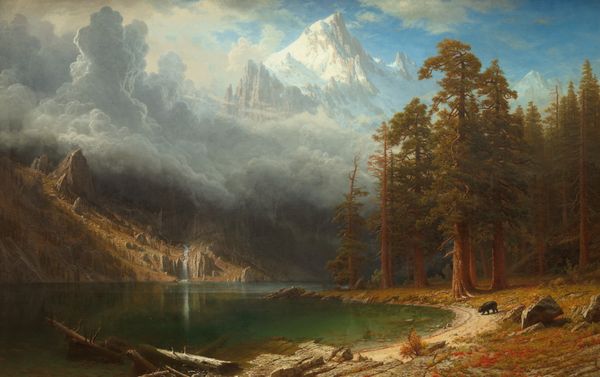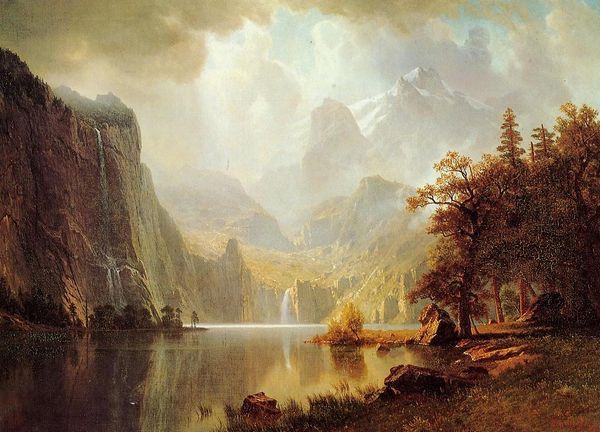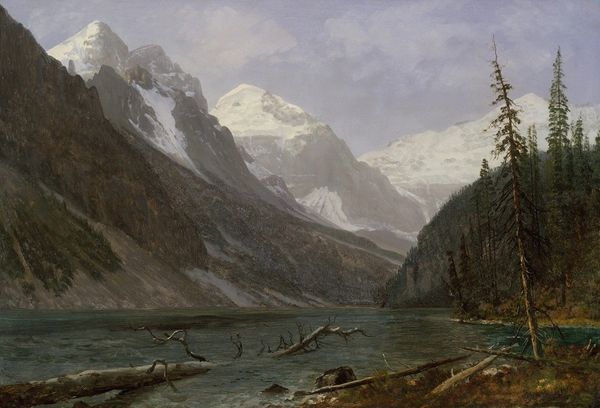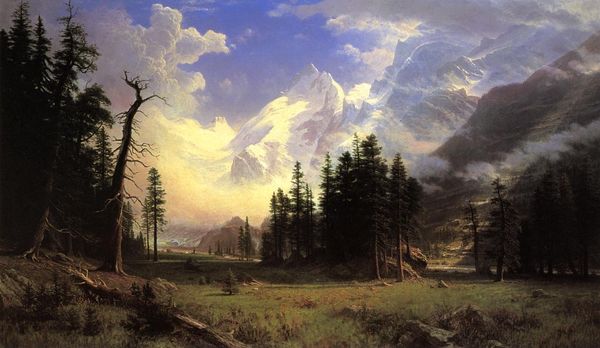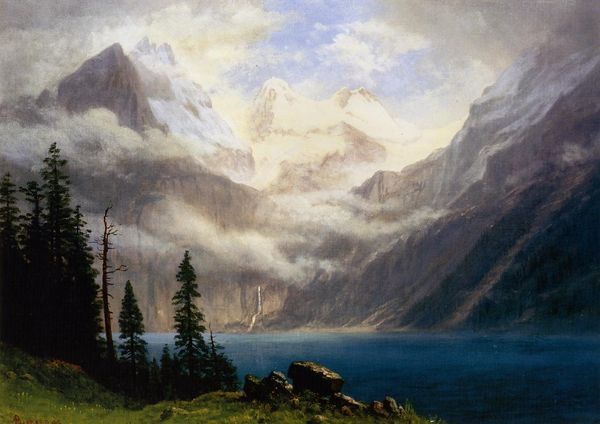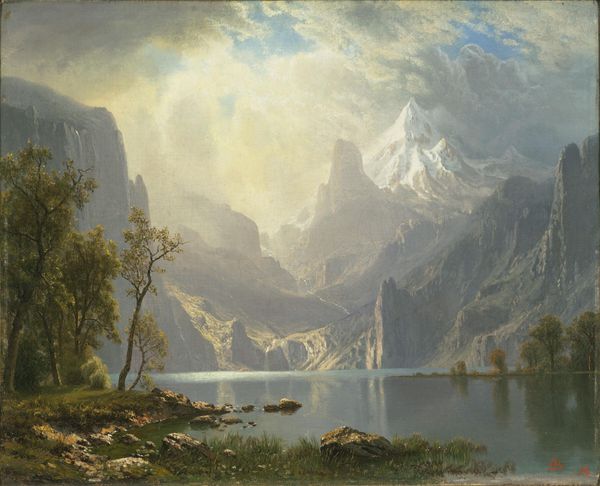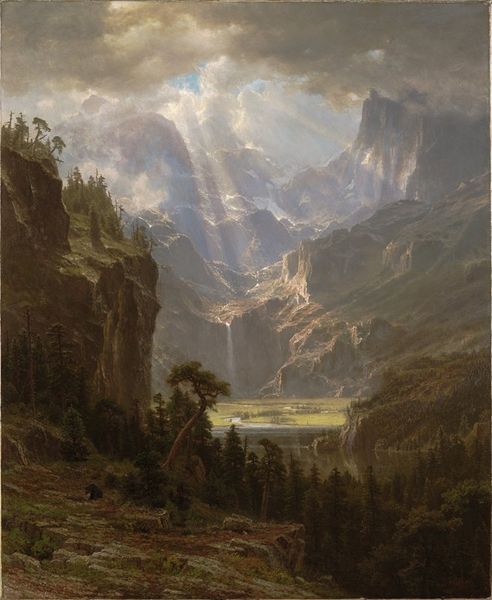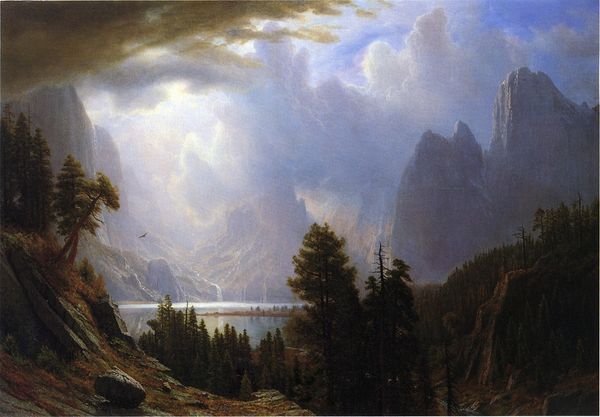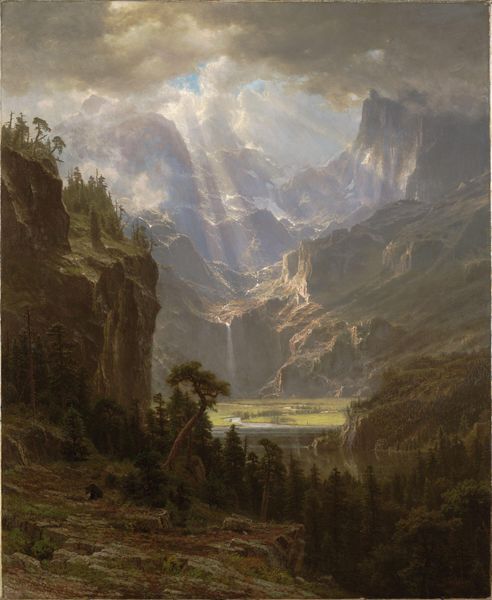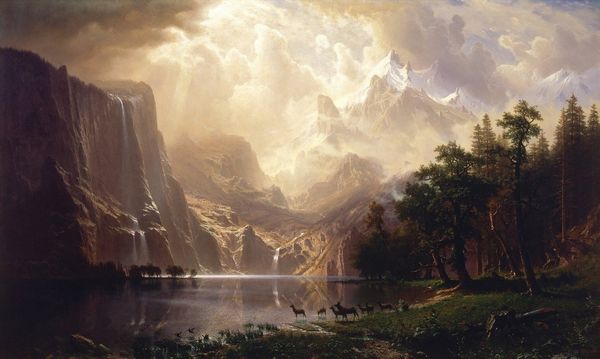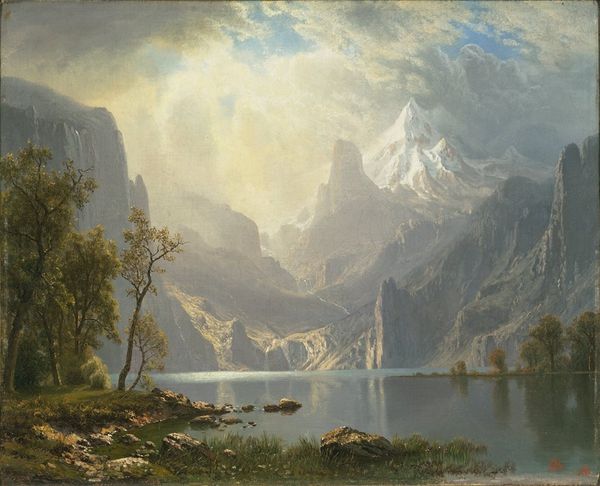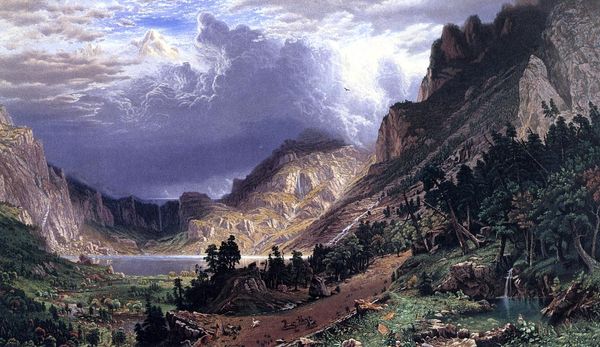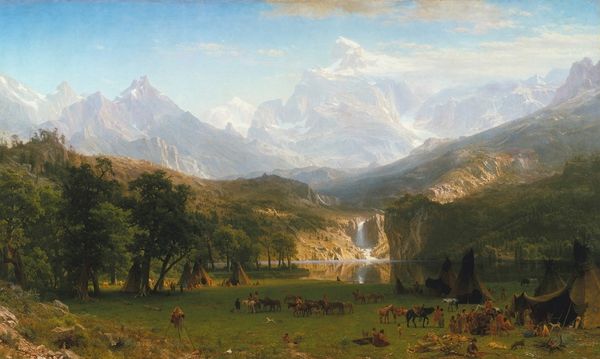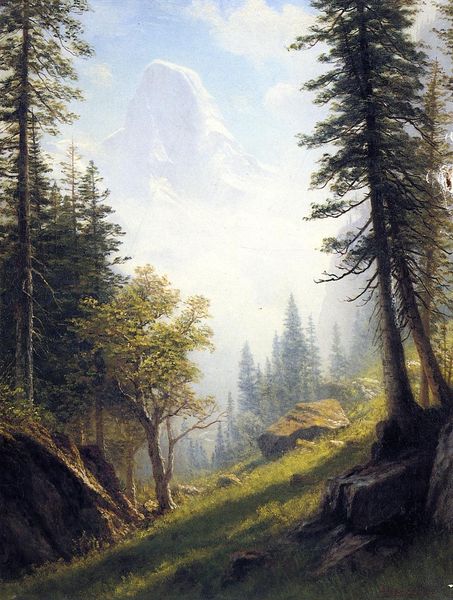
Sierra Nevada 1873
0:00
0:00
albertbierstadt
Reynolda House Museum of American Art, Winston-Salem, NC, US
Dimensions: 97.79 x 143.55 cm
Copyright: Public domain
Editor: Albert Bierstadt’s "Sierra Nevada," painted in 1873, captures this impressive mountain range. It’s striking how the monumental peaks contrast with the tiny deer in the foreground, really emphasizing the scale of nature. What visual narratives or symbols do you find particularly compelling in this painting? Curator: It’s that contrast you noticed which speaks volumes. The diminutive deer, yes, but also consider the Indigenous absence, replaced by *terra nullius* – empty land ready for claiming. Bierstadt employs a very specific visual language common to the Hudson River School. Editor: So the *feeling* of untouched wilderness is doing a lot of work, historically? Curator: Precisely. These landscapes aren’t just pretty pictures. They’re potent symbols. The soaring mountains equate to aspiration, divine presence. Note also the light, particularly its strategic deployment, illuminating certain peaks and obscuring others. It isn’t simply light; it signifies something. What do you see it signifying? Editor: Almost…divine permission, perhaps? Like, manifest destiny made visual. Curator: Exactly. The waterfall signifies renewal, rebirth. Look closely. Consider how Bierstadt subtly guides our gaze – the composition directs us from the ‘civilized’ foreground, inhabited by fauna, to the majestic, ‘untamed’ heights, ripe for exploration and dominion. Editor: I hadn't considered how much the composition tells the story. This makes me rethink how I see landscape paintings generally. Curator: These romanticized visions conceal complex political narratives deeply embedded in cultural memory. Looking closer unveils those hidden layers. Editor: This conversation has certainly given me a deeper appreciation for how much landscape painting conveys beyond just the scenery itself.
Comments
No comments
Be the first to comment and join the conversation on the ultimate creative platform.
